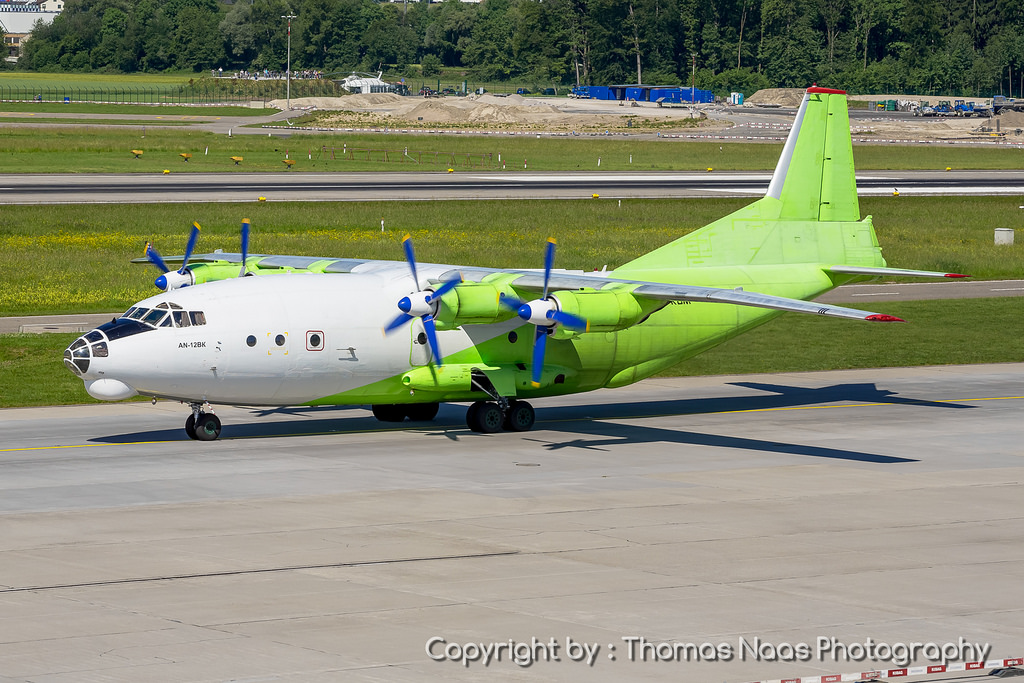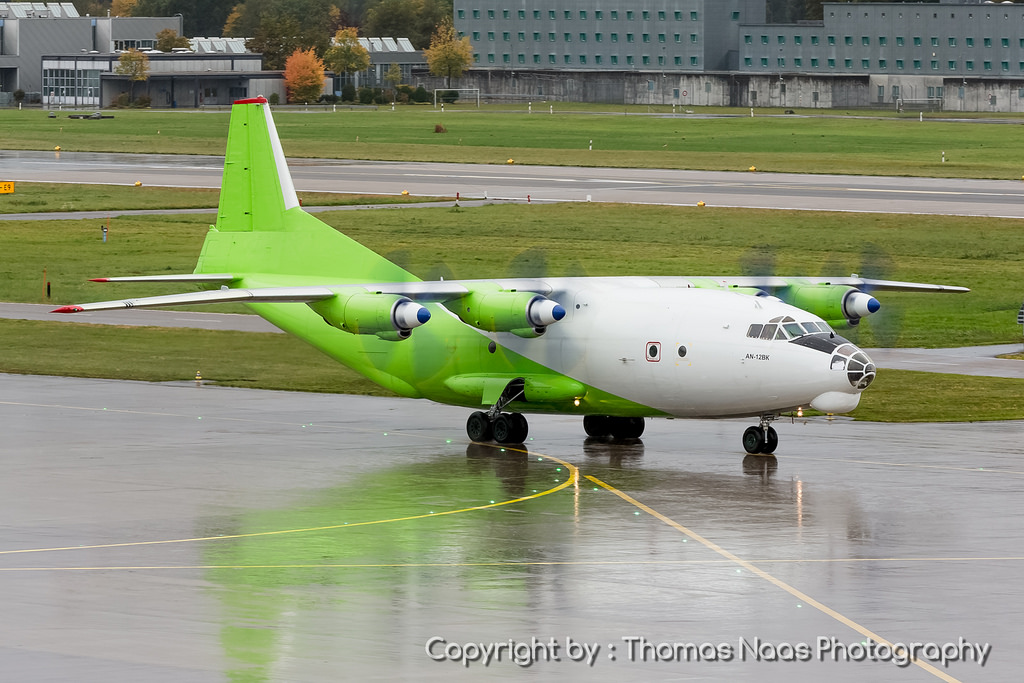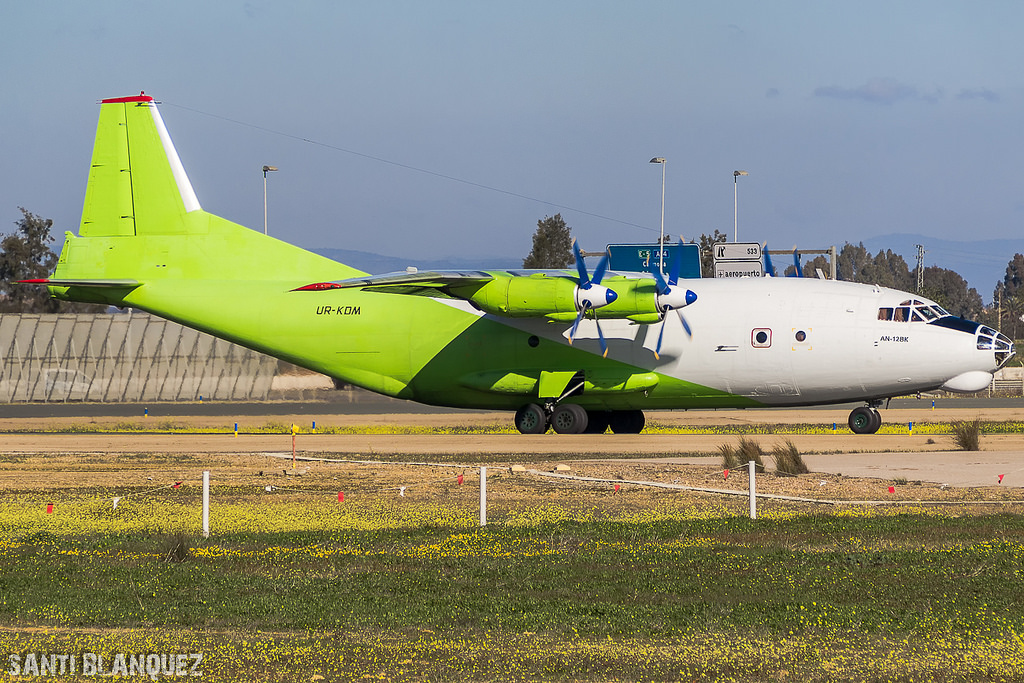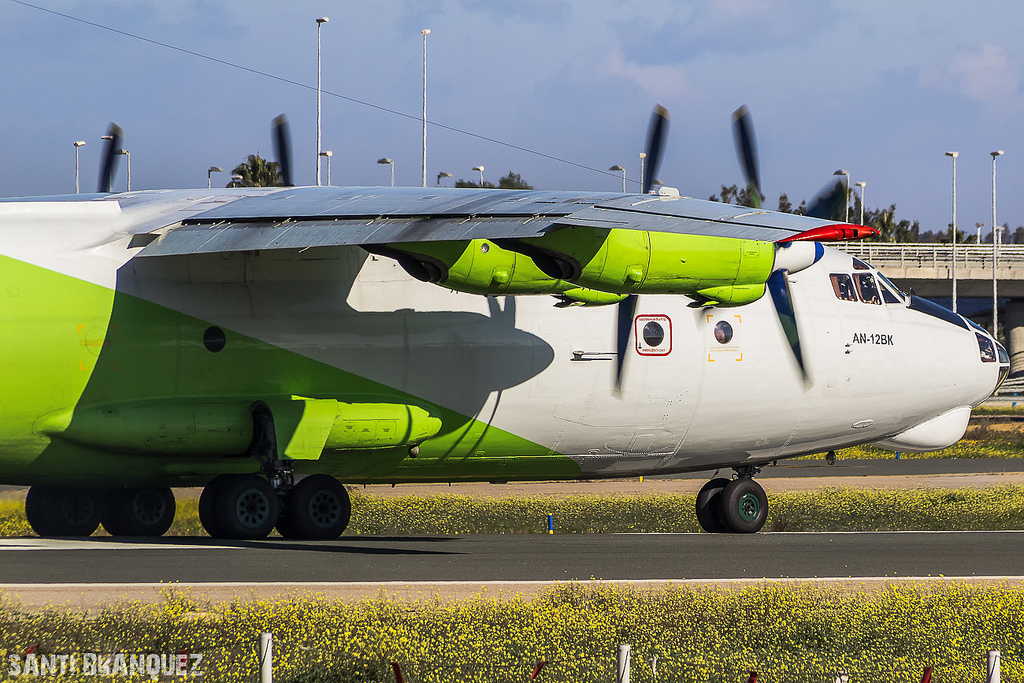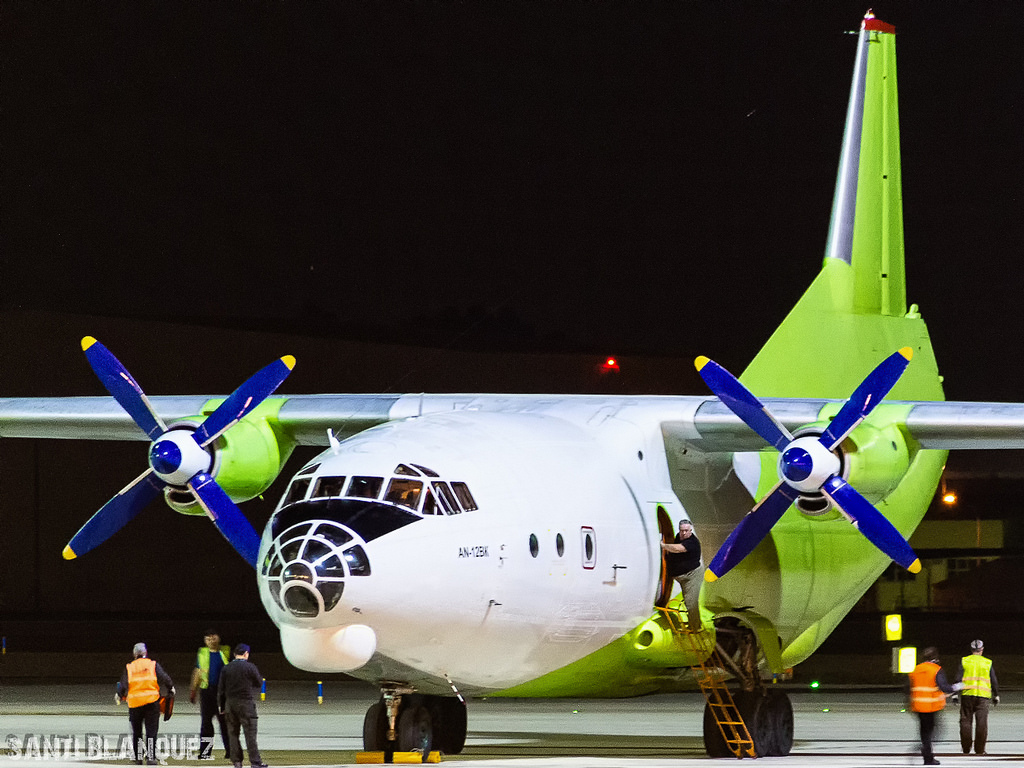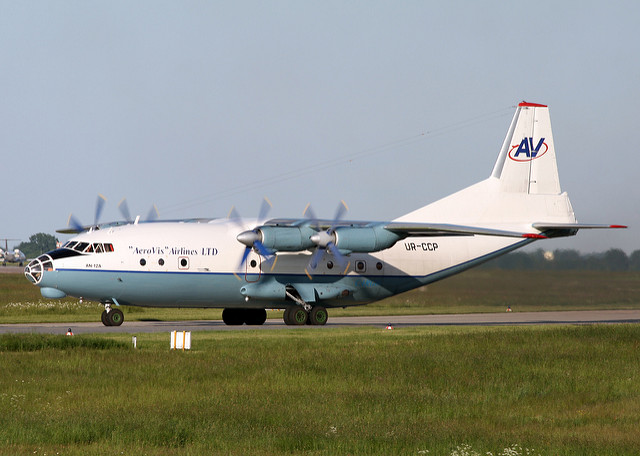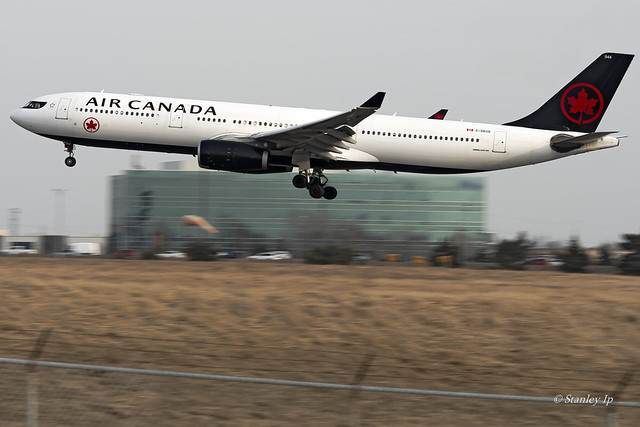Cavok AN12 at Gao on Mar 30th 2018, nose gear collapse on landing
Last Update: December 9, 2019 / 15:41:57 GMT/Zulu time
Incident Facts
Date of incident
Mar 30, 2018
Classification
Accident
Airline
Cavok Air
Departure
Bamako, Mali
Destination
Gao, Mali
Aircraft Registration
UR-KDM
Aircraft Type
Antonov An-12
ICAO Type Designator
AN12
Due to the fact that the occurrence happened on a military base, the investigation is conducted by the Air Force Mali and the military bureau of France. Ukraine's NBAAI is assisting the investigation.
On Aug 8th 2018 the NBAAI reported the investigation is now conducted by the French BEA.
On Jul 31st 2019 (not discovered until Dec 9th 2019) the French Ministry of Defense released the final report in French only, that had been compiled by the French BEA-E (Editorial note: to serve the purpose of global prevention of the repeat of causes leading to an occurrence an additional timely release of all occurrence reports in the only world spanning aviation language English would be necessary, a French only release does not achieve this purpose as set by ICAO annex 13 and just forces many aviators to waste much more time and effort each in trying to understand the circumstances leading to the occurrence. Aviators operating internationally are required to read/speak English besides their local language, investigators need to be able to read/write/speak English to communicate with their counterparts all around the globe).
The report concludes the probable causes into the accident were:
On Mar 30th 2018 the AN-12 UR-KDM carried out a transport of fresh food for the benefit of French armed forces. On final approach to Gao limited visibility prompted the crew to divert to Bamako. In the early afternoon the crew deemed the conditions had improved and departed again for Gao performing a circuit to land on Gao's dirt runway 07R. With the visibility 3000 meters and the runway being difficult to detect the crew requested Gao's tower to mark the runway threshold with flashlights. Nonetheless, the crew did not establish visual contact with the runway until late into the short final, made corrections to align with the runway center line which caused the approach to become unstabilized. The crew initiated a late and poorly executed flare causing the aircraft to touch down on the runway and bounce three times. One or more of these runway contacts resulted in excessive forces on the nose gear and caused it to fold. The aircraft continued for 500 meters on its nose before coming to a rest, the crew shut the engines down and evacuated the aircraft.
The investigation determined the causes of the accident were environmental, organizational and human factors.
The following factors contributed to a late recognition of the runway:
- visibility reduced by dry haze (less than 3000 meters)
- the lack of contrast of the laterite runway with surrounding terrain
- inefficiency of portable lighting installed at the runway threshold on the crew's request
The following factors contributed to the unstable approach and poorly executed flare:
- focus of attention on the point of landing leading to a poorly performed landing with no go around
- operational pressure to deliver fresh food on time
- the emulation induced by another crew of the same operator who had landed in Gao earlier under the same conditions
- fatigue accumulated by the chain of flights and climatic conditions, conducise to errors of judgement and delays in decision making
- the organisation in the cockpit which did not promote cockpit resource management
The BEA-E reported the captain (50, ATPL, 10,714 hours total, 8,356 hours on type) was assisted by a first officer (60, ATPL, 8,444 hours total, 8,153 hours on type), a flight engineer (61, 11,662 hours total, 6,180 hours on type), a navigator (53, 8,724 hours total, 6,772 hours on type) and a radio operator (51, 7,616 hours total, 1,120 hours on type).
The BEA-E analysed that the flight had originated in Vatry (France) and had arrived in Ghardaia (Algeria) at 16:55L the day before. The aircraft departed Ghardaia for Gao at 03:30L, went around at Gao at 06:50L and landed in Bamako at 08:50L. At 14:44L the aircraft departed Bamako for Gao and joined final approach to Gao at 16:45L (first runway touch down at 16:48L). 38 seconds prior to first touch down the crew believed they had the runway in sight, about 2600 meters/1.4nm short of the runway threshold, the crew applies control inputs to correct the trajectory in both horizontal and vertical direction. The crew used rudder on short final to align with the runway. The aircraft touched down at +2.9G and about 362 fpm rate of descent and bounced. The captain applies nose down inputs. The aircraft touched down again at +2.0G about 2.5 seconds later, a third touchdown at +2.9G follows 5.2 seconds after first touchdown, the fourth and last touchdown occurred at +2.5G 6.3 seconds after first touchdown, the aircraft came to a stop 23 seconds after the first touchdown.
The flight data recorder did not reveal any anomaly, all aircraft systems were working normally.
The AN-12 was designed to withstand a maximum vertical acceleration of +2.0G at landing. As result of repeated impact with the runway above the design limit caused damage to the nose gear but also to the engines #3 and #4 (both right hand engines, AI-20M), a fuel line ruptured as result of the violent impacts, fuel spilled into the engine cowl of the outboard right hand engine (#4) and ignited on contact with hot parts of the engine.
The laterite runway provides no contrast to the surrounding terrain and is hard to detect therefore, the orange coloured material is easily confused with the surrounding terrain. The portable runway threshold lights were ineffective in day time, the crew did not see the lights, as result they picked the runway up late. Following the late detection of the runway the crew correctly aligned with the center line of the runway, a large nose down input was made to correct the vertical profile of the unstable approach.
The crew had taken the aircraft the previous day in Vatry and had operated to Ghardaia, then departed the following early morning to Gao but needed to divert to Bamako. About 6 hours after landing in Bamako the crew departed again for Gao. The crew thus did not have time to acclimatize to the difficult weather conditions in the region. The crews' likely fatigue may cause a decrease in alertness resulting in impaired analytical capability. Thus in the face of adverse environmental conditions and an unstable approach the crew was unable to challenge their action plan to land, the decision to go around was too costly in terms of cognitive resources.
The time limit to deliver the fresh food and frozen products was Mar 31st 2018 in the morning. Meeting deadlines is strongly rooted in the crew which was committed to fulfill the mission on time. Although the deadline provided some flexibility, operational pressure thus pushed the crew to complete their mission as soon as possible.
During the first approach to Gao the captain deemed the visibility insufficient to perform a landing and decided to divert to Bamako. About 20 minutes later the crew of another company AN-12 continued the approach to Gao for an uneventful landing. The weather conditions present during the second approach were similiar to the first approach. The fact, that another crew had managed to land in Gao in the same weather scenario may have caused a sense of frustration and failure and created additional pressure to continue for a landing.
Instead of maintaining a stable elevator input during touchdown, the FDR shows the captain initiated a large nose up input 0.7 seconds prior to touchdown and immediately thereafter pushed the control column to its forward mechanical stop. Too late control inputs to initiate the flare caused the bounces.
The investigation found a steep gradient between captain and his crew, there was no discussion amongst the crew regarding the decision to land or go around, there was no challenge to continuing the landing despite the weather conditions and unstable approach. The interviews with the members of the crew revealed an autocratic cockpit environment, that excluded any other member of the crew from making the decision to go around. This lack of CRM contributed to the accident.
Incident Facts
Date of incident
Mar 30, 2018
Classification
Accident
Airline
Cavok Air
Departure
Bamako, Mali
Destination
Gao, Mali
Aircraft Registration
UR-KDM
Aircraft Type
Antonov An-12
ICAO Type Designator
AN12
This article is published under license from Avherald.com. © of text by Avherald.com.
Article source
You can read 2 more free articles without a subscription.
Subscribe now and continue reading without any limits!
Read unlimited articles and receive our daily update briefing. Gain better insights into what is happening in commercial aviation safety.
Send tip
Support AeroInside by sending a small tip amount.
Related articles
Cavok AN12 at Hassi Messaoud on Apr 6th 2016, engine shut down in flight
A Cavok Air Antonov AN-12BP, registration UR-CCP performing freight flight from Marseille (France) to Hassi Messaoud (Algeria), was descending…
Cavok AN12 at Mulhouse on Jun 17th 2014, engine shut down in flight
A Cavok Air Antonov AN-12, registration UR-CJN performing a charter cargo flight from Basel/Mulhouse (Switzerland/France) to Larnaca (Cyprus)…
Newest articles
LOT E170 at Vilnius on Nov 26th 2025, runway excursion on turnoff
A LOT Polish Airlines Embraer ERJ-170, registration SP-LDK performing flight LO-771 from Warsaw (Poland) to Vilnius (Lithuania), landed on Vilnius'…
Canada A333 near Winnipeg on Oct 19th 2025, smoke from standby compass
An Air Canada Airbus A330-300, registration C-GKUG performing flight AC-327 from Montreal,QC to Calgary,AB (Canada) with 285 people on board, was…
Subscribe today
Are you researching aviation incidents? Get access to AeroInside Insights, unlimited read access and receive the daily newsletter.
Pick your plan and subscribePartner

ELITE Simulation Solutions is a leading global provider of Flight Simulation Training Devices, IFR training software as well as flight controls and related services. Find out more.
SafetyScan Pro provides streamlined access to thousands of aviation accident reports. Tailored for your safety management efforts. Book your demo today
AeroInside Blog
Popular aircraft
Airbus A320Boeing 737-800
Boeing 737-800 MAX
Popular airlines
American AirlinesUnited
Delta
Air Canada
Lufthansa
British Airways
